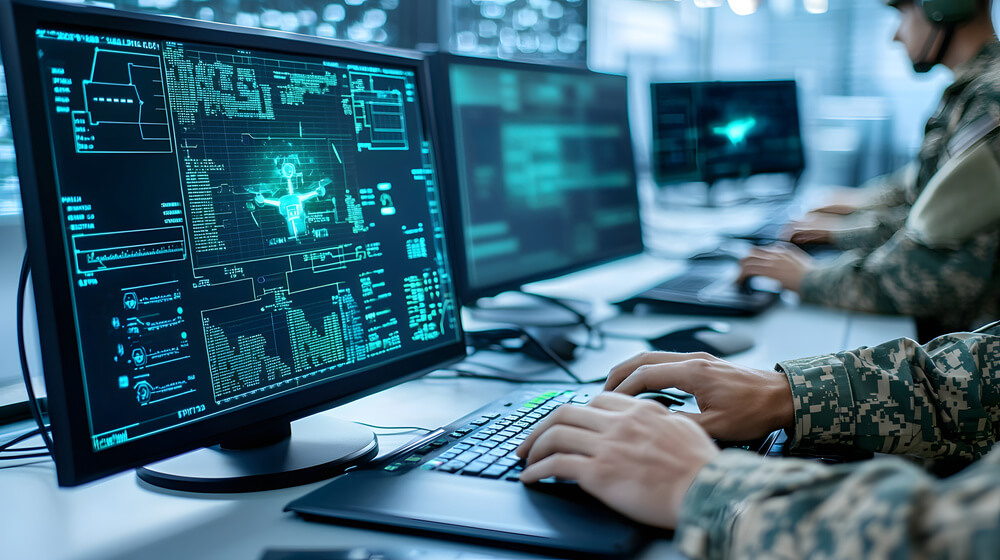The Rise of UAVs in Modern Society
The quick growth of UAVs has transformed industries from humanitarian aid to agriculture and logistics, but their growing presence also increases drone threats in unauthorized areas. These UAV security challenges are becoming more evident as the technology becomes more accessible to the general public. While some individuals exploit UAVs for recreational purposes, others use them for criminal activities, including smuggling contraband across borders, conducting unauthorized surveillance, and even carrying out potential terrorist attacks. The dual-use nature of UAVs creates security challenges, as they serve positive purposes but can also be misused, posing risks for law enforcement and public safety.
Law enforcement faces growing UAV security challenges as legitimate and illegal drone use overlap. Traditional security measures often struggle to keep up with evolving threats. UAVs can easily bypass physical barriers, reach inaccessible areas, and operate remotely, making them difficult to detect and neutralize. As a result, agencies are increasingly investing in anti-drone technologies designed to detect, track, and mitigate unauthorized UAVs. These technologies aim to address the UAV security challenges by providing law enforcement with the tools needed to protect sensitive areas and ensure public safety.
An Overview of Anti-Drone Technologies
The growing presence of UAVs has driven the need for advanced anti-drone technology to protect public safety and sensitive areas. Detection systems use radar, RF analysis, and optical sensors to spot unauthorized drones. Radar systems can detect movement from considerable distances, making them valuable for monitoring large areas. RF analysis uses communication signals to detect and locate drones, even in complex environments. Optical sensors, like infrared and thermal imaging, help track and differentiate between legal and illegal drone use.
These systems are integrated into platforms offering real-time alerts and quick response capabilities. Once a drone is detected, mitigation techniques address UAV security challenges. These include jamming to disrupt control signals or GPS, and advanced methods like drone capture systems using nets or tethered drones to intercept and immobilize the UAV. Directed energy weapons, like lasers or microwaves, disable UAV electronics, making them inoperative. As mitigation techniques advance, they are adapted to meet specific drone challenges, providing law enforcement with the tools needed to maintain public safety.
Police Counter-UAV Tactics Employed Today
As UAV use grows across sectors, law enforcement is developing police counter-UAV tactics to protect public safety. These tactics combine advanced technologies and strategies to detect, track, and neutralize unauthorized UAVs before they pose a threat. Technologically, agencies have adopted a multi-layered approach to drone defense strategies, integrating radar, radio frequency (RF) analysis, and optical sensors to create a robust detection network. This network detects UAV attacks, distinguishing benign from malicious activity. RF analysis intercepts drone signals, helping law enforcement locate threats and respond adequately.
Law enforcement is training to use police counter-UAV tactics, including jamming devices and drone capture systems. Jammers disrupt the control link between the UAV and its operator, making the drone inoperable. In scenarios where a more targeted approach is required, drone capture systems are utilized, leveraging nets or specially designed UAVs to physically intercept and immobilize rogue drones. In specific scenarios, drone capture systems use nets or specialized UAVs to intercept rogue drones. Agencies are also considering directed energy weapons, like lasers and microwaves, to disable unauthorized drones and neutralize the threat.
The Future of UAV Regulation and Law Enforcement
As drone technology advances, current laws are being reevaluated to address UAV security challenges, requiring proactive regulation to maximize benefits while securing public safety. Future laws will balance innovation with necessary restrictions to manage risks, supporting police counter-UAV tactics. As drones become more common, UAV security challenges will grow, requiring law enforcement to adapt their anti-drone strategies. To address these, agencies must manage privacy issues, airspace safety, and the risk of UAV misuse. They must also improve technical and operational capabilities to implement laws and protect communities.
To address UAV security challenges, law enforcement must integrate modern technologies and tactics, such as AI-driven analytics and machine learning, to assess and prevent unauthorized drone activities. International collaboration will also be important in creating global standards for drone regulation. As policymakers and law enforcement shape UAV regulations, they must stay proactive, confirming legal frameworks anticipate technological advancements and support capable police counter-UAV tactics.


Recent Comments